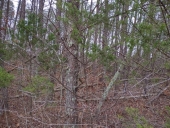
 4
4




 3
3




 1
1




 2
2




 1
1




 1
1




 1
1




 5
5




 2
2




 4
4




 1
1




 7
7




 1
1




 4
4




Visit Redhawk's soil series: https://permies.com/wiki/redhawk-soil
How permies.com works: https://permies.com/wiki/34193/permies-works-links-threads
 2
2




 1
1




 3
3




Visit Redhawk's soil series: https://permies.com/wiki/redhawk-soil
How permies.com works: https://permies.com/wiki/34193/permies-works-links-threads

 1
1




Jay Clayton wrote:
Question for the group:
Does anyone know of a URL or a place on this forum where I can see some pictures of homebuilt logging tools? I'd like to build my own cranes, log lifts and carriers. I Know how I'd design them, But I'd like to base my builds on what's been done in the past.
Tradition is not the worship of ashes, but the preservation of fire.
 1
1




 1
1




Jay Clayton wrote:Hay Jeremy,
Thanks for the info. I will be posting pics of the crane, the transforming/articulated log hauler, and the multi-headed sawmill sometime later this month.
Cheers!
Jay

|
Live ordinary life in an extraordinary way. Details embedded in this tiny ad:
The new gardening playing cards kickstarter is now live!
https://www.kickstarter.com/projects/paulwheaton/garden-cards
|





